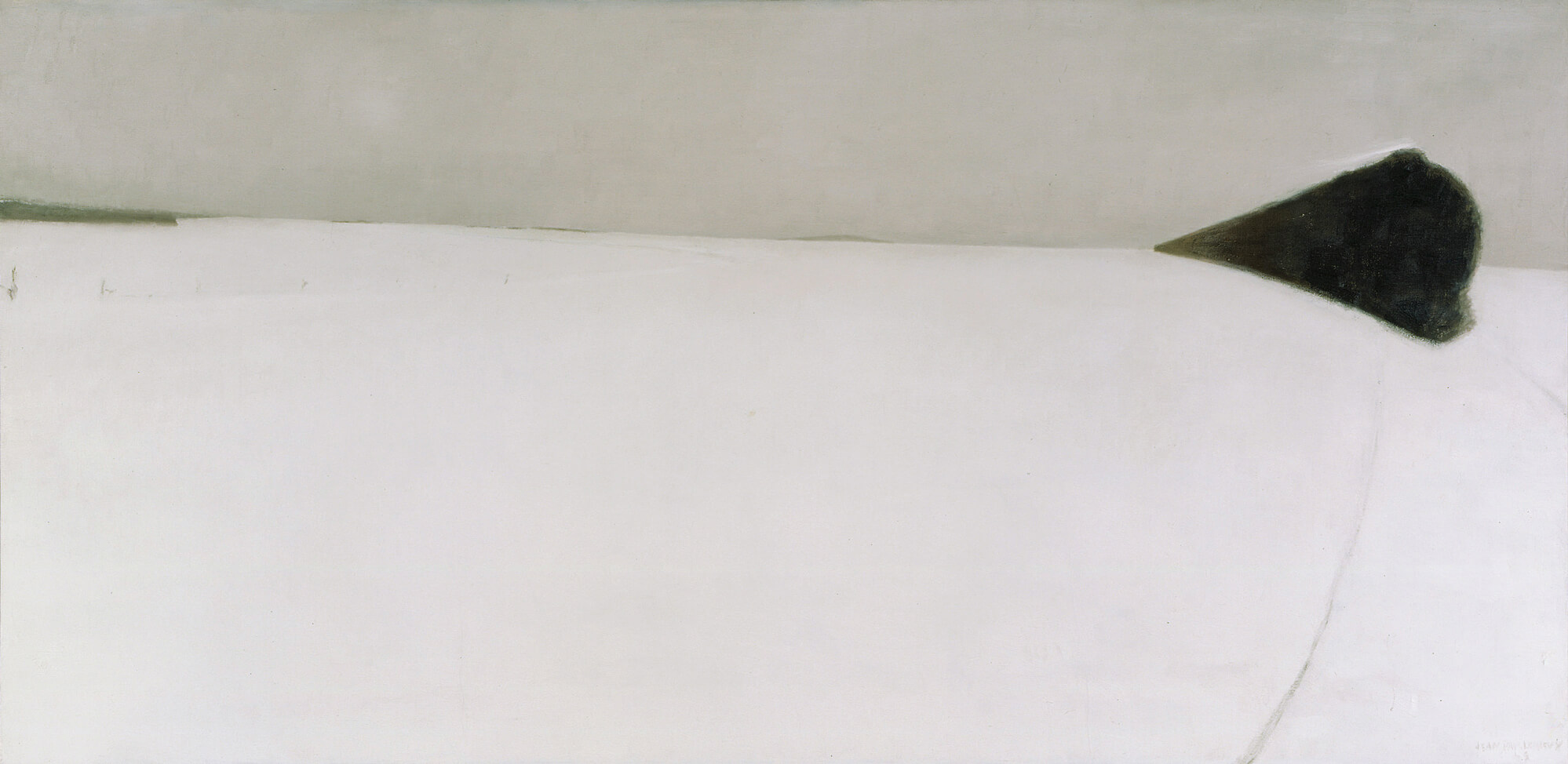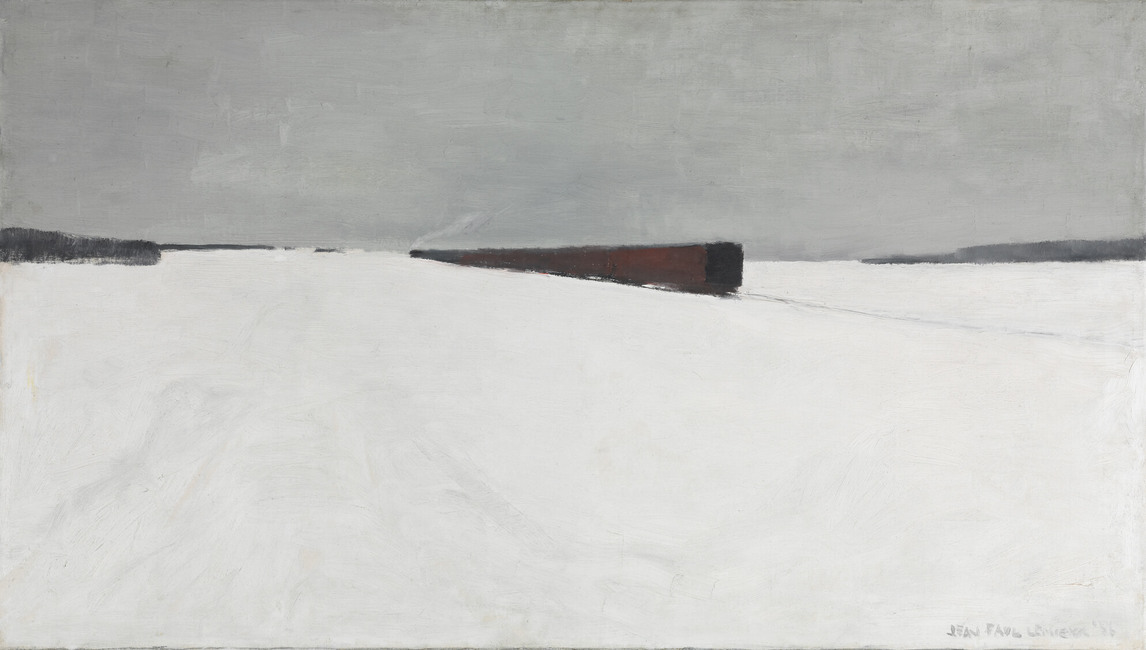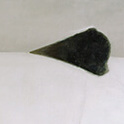The Express 1968

Jean Paul Lemieux, The Express (Le rapide), 1968
Oil on canvas, 101 x 204 cm
Musée national des beaux-arts du Québec, Quebec City
Jean Paul Lemieux loved travelling by rail because, as he said, “You have time to see the landscape coming, to let it appear, display itself, then vanish.” He introduced the train theme for the first time with The Noon Train (Le train de midi) in 1956, at a decisive turning point in his artistic career. From now on he would be known as the painter of “vast white spaces.” He had entered his classic period, a time of artistic maturity that would continue until 1970, assuring him both national and international fame.

The composition of The Express reprises that of The Noon Train, painted twelve years earlier. In both there are two surface planes with a horizon line that cuts the space by two-thirds, and a dark shape rising above it. A few significant differences between the two paintings show how Lemieux, returning to a previously treated subject, carries it to another, higher degree of symbolism. In The Noon Train the train pierces through the space and moves away from the viewer, but in The Express the train is coming toward us and a much larger horizontal space covers the two planes with immaculate whiteness.
Looking at The Express, the viewer’s eye is held in an attempt to decode what is occurring on this denuded, almost abstract, surface. Only after several seconds do we experience the sensation described by Lemieux of “seeing the landscape coming” when travelling by train. An ingenious formal game allows us to see the train breaking away through a vast expanse of snow, and simultaneously to understand that it is not so much the train itself that the artist wanted to paint but rather the speed of the machine; the title he chose makes that explicit.
The composition of The Express appears simple but is in reality dominated by a complex series of evocations of space and time, passage and duration, and the “here and now” of the painting. On this surface the motif of the train is charged with meaning, and expressive of extreme tension; presented differently it might have offered nothing but its formal beauty. Lemieux’s art is supported by geometric order, but that takes nothing away from its figurative purpose, which the artist captures by both metaphorical and symbolic means.

 About the Author
About the Author
 More Online Art Books
More Online Art Books
 Acknowledgements
Acknowledgements